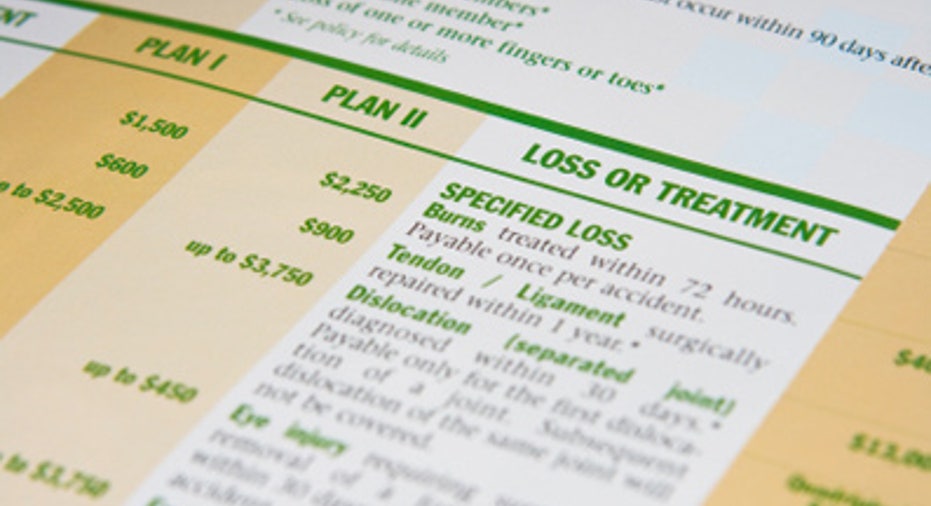Do You Need Critical Illness Insurance?

You've probably never heard of critical illness insurance, a simple and reasonably priced supplemental health policy that can be a financial lifesaver if you're diagnosed with one of the "big three" -- cancer, heart attack or stroke.
First, the coverage is relatively new to the U.S. market; the first policy was sold in 1996 and just 600,000 Americans are currently covered, according to the American Association for Critical Illness Insurance, or AACII. Second, it's sold by brokers and agents who are more focused on selling their bread-and-butter product, life insurance. Third, it mostly benefits those in their 30s, 40s and early 50s, a demographic that isn't exactly beating down the doors of life insurers these days.
"The No. 1 problem is nobody has ever heard of this protection," says Jesse Slome, executive director of the American Association for Critical Illness Insurance. "In that regard, it's very much like long-term care insurance."
Just as long-term care recognized the new reality that Americans were living longer, critical illness insurance acknowledges that we're far more likely to survive a heart attack, cancer or stroke today than we were just a few years ago. For example, of the 1.4 million Americans who will be diagnosed with cancer this year, women have a 63% chance of surviving at least five years and men a 66% chance, according to AACII figures.
"The good news is you're likely to live," says Slome. "The bad news is you're likely to be broke."
In fact, more than 60% of all U.S. bankruptcies in 2007 were caused by medical bills and 78% of those individuals had health insurance, according to a national study published in The American Journal of Medicine in 2009.
Do You Really Need 'CI' Coverage?
Critical illness, or CI, insurance is designed to help cover the medical expenses that your health insurance won't cover, such as deductibles, copays, noncovered prescription drugs, alternative treatments and out-of-town care, as well as nonmedical expenses, including mortgage or rent, utilities, car payments and insurance, health insurance premiums and lost income.
"If you're 30 years old, married with kids and you get cancer, the first thing that is going to happen is, you'll take time off from work," says Slome. "Some of that is compensated, some won't be. And your spouse will likely take some time off to help compensate. So it's not just losing one income; it impacts the whole family."
It can make up for the shortcomings of your employer-sponsored disability coverage, which typically only covers 60% of your income and may not kick in at all if your treatments allow you to return to work.
CI coverage pays your entire benefit amount in one lump-sum payment if you are diagnosed with a critical illness covered by the policy, even if you make a full recovery. Some policies will even pay you multiple times. For instance, you'd get one payout for a cancer diagnosis, then a second, albeit reduced payment if you have a heart attack.
With proper planning, critical insurance can help individuals withstand a prolonged treatment and recovery period without digging themselves deep into debt. It also can help pay for lifesaving treatment that requires temporary relocation, such as waiting for an organ transplant.
Costs and Considerations
How much might you need? As a starting point, Ken Smith, director of product sales at Assurity Life Insurance, recommends multiplying your monthly mortgage payment by 24, or two years, and adding $5,000 for expenses not covered by your health insurance. For example, if your mortgage is $1,500 per month, your policy benefit amount would be $41,000. Policy limits can range from $10,000 to $1 million.
As for costs, rates may depend on your age, sex, use of tobacco products, health and the coverage amount. For example, the average annual premium for a male nonsmoker based on a $40,000 benefit is $575 to $610 at age 40; $745 to $785 at age 45; and $940 to $980 at age 50, according to the AACII. Tobacco users can expect to pay roughly double.
Critical illness insurance is available as individual coverage, through an employer's group plan and even as a rider on some life insurance policies. Slome says CI policy rates are usually guaranteed for three years and, while not tax deductible for individuals, are paid tax free to recipients. Policies with face values of less than $50,000 typically don't require a medical exam, he says.
CI policies contain strict definitions of what does and does not constitute critical illness, so don't expect to collect on a diagnosis of simple skin cancer or chest pain.